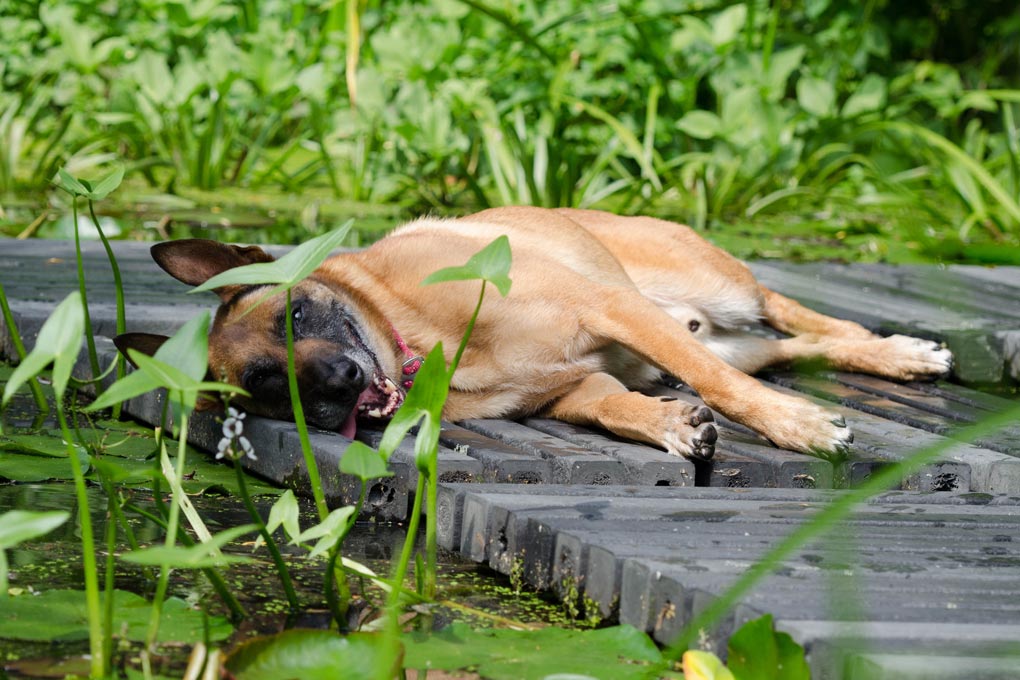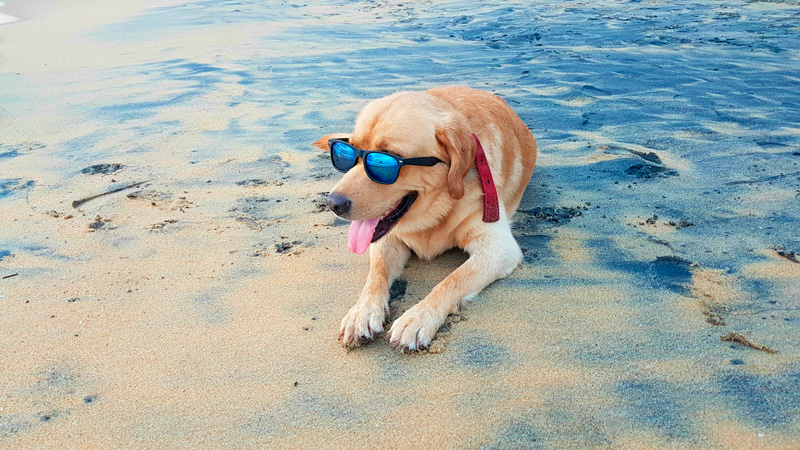
Temperatures that are comfortable for us can, under certain circumstances, lead to heat stroke for the dog.
Heat stroke in dogs
If temperatures rise to over 25°C in summer, dogs are more likely to suffer from heatstroke. Since there are no sweat glands on large parts of the skin in dogs and cats, the animals are very sensitive to heat. Sweat glands are only located on the nose and the ball of the nose. This is too small a surface area to regulate body temperature sufficiently. And unlike humans, the warm fur can be exchanged for an airy summer dress.
How does heatstroke occur in dogs?
If the dog is exposed to heat for a long time and has no opportunity to retreat to a cool place, the dog can very quickly develop heat stroke. If you park your car in the sun at a pleasant 24°C, it can become a fatal trap for your dog inside within an hour. Never leave your dog alone in the car, even if it is in the shade. The sun moves and the car turns into an oven within a very short time.
In warm weather, high humidity, and strenuous physical activity, well-trained dogs can suffer heat stroke. Rescue dogs may only be used for 15 minutes at temperatures above 30°C. Then a sufficiently long break must be taken and the animal must have unrestricted access to water. To ensure that the rescue dog is adequately protected, the body temperature is checked regularly.
If your dog is a flat-nosed dog (e.g. French Bulldog, Pug, Boxer, Cavalier King Charles Spaniel, Pekingese…) you should be particularly careful. Even a quiet walk in the midday heat can cause heat stroke in a dog with restricted breathing.
What happens when you have heat stroke?
Dogs dissipate heat by panting. Due to the resulting loss of fluid, the animals become dehydrated and their body temperature continues to rise. From a body temperature of 40°C, the organs are no longer adequately supplied with blood, significant circulatory problems occur and shock can occur. If the body temperature continues to rise, the body’s own protein clots, the animal collapses and, after a painful struggle, dies of heart failure.
These are the signs of heat stroke:
- heavy panting and shallow breathing
- great restlessness, the dog is looking for a place in the shade
- rapid pulse and heart palpitations
- Body temperature over 40°C
- deep red tongue and glassy gaze
- Inside of ears are hot and red
- the animal is exhausted, restless and convulsing
- Vomiting and diarrhea
- Balance disorders and staggering
- Apathy and, in the worst case, unconsciousness
First aid measures for heat stroke:
- move the animal to a cool, well-ventilated place
- offer the animal measured water (never force it)
- place the dog on a damp towel and cool his head and neck
- slowly moisten the legs
- shower the animal slowly and carefully, starting with the legs
- Do not under any circumstances pour water on the animal, risk of shock!
- under no circumstances use ice-cold water, danger to life!
- If the dog is unconscious, place him on his right side, stretching his head and neck to prevent suffocation
take the animal to the vet immediately
If you have a heat-damaged dog, you should always and under all circumstances consult a veterinarian! Only a veterinarian has the chance to prevent irreparable damage and initiate emergency measures.
Here are some useful tips on how to get your dog through the summer heat!
Hitzschlag beim Hund

Paw Care for Your Dog
The cold season is just around the corner, and paw care for your dog is especially important. …

The dog’s sleeping behavior
Nothing is more calming than watching your dog sleep. Watching his sleeping behavior, how relaxed he is lying in front of you and thinking about what he might be dreaming about. …

Getting dogs and cats used to each other
Despite all the prejudices and common clichés, dogs and cats can become good friends. For them to live peacefully together under one roof, they must be carefully introduced to each other. …

Holiday with a dog – the most important points summarized.
Finally on holiday! The best time of the year is best spent with the whole family and the dog is a must…



